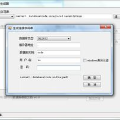Post-processing of the raw bits produced by a true random number generator (TRNG) is always necessary when the entropy per bit is insufficient for security applications. In this paper, we derive a tight bound on the output min-entropy of the algorithmic post-processing module based on linear codes, known as linear correctors. Our bound is based on the codes' weight distributions, and we prove that it holds even for the real-world noise sources that produce independent but not identically distributed bits. Additionally, we present a method for identifying the optimal linear corrector for a given input min-entropy rate that maximizes the throughput of the post-processed bits while simultaneously achieving the needed security level. Our findings show that for an output min-entropy rate of $0.999$, the extraction efficiency of the linear correctors with the new bound can be up to $130.56\%$ higher when compared to the old bound, with an average improvement of $41.2\%$ over the entire input min-entropy range. On the other hand, the required min-entropy of the raw bits for the individual correctors can be reduced by up to $61.62\%$.
翻译:随机数生成器 (TRNG) 生成的原始比特的后处理对于安全应用总是必要的,当 entropy per bit 不足时。在本文中,我们推导了一种基于线性码的算法后处理模块 (称为线性校正器) 输出最小熵的紧密界限。我们的界限是基于码的权重分布的,我们证明即使对于产生独立但不是完全相同分布的实际噪声源,界限也是成立的。此外,我们提出了一种方法,用于确定针对给定输入最小熵速率的最佳线性校正器,以在同时实现所需的安全级别的情况下最大程度地提高后处理的比特吞吐量。我们的研究结果表明,对于 $0.999$ 的输出最小熵速率,采用新界限的线性校正器的提取效率最高可提高 $130.56\%$,相比旧界限,平均改进率为 $41.2\%$,在整个输入最小熵范围内。另一方面,单个校正器所需的原始比特的最小熵可降低高达 $61.62\%$。



